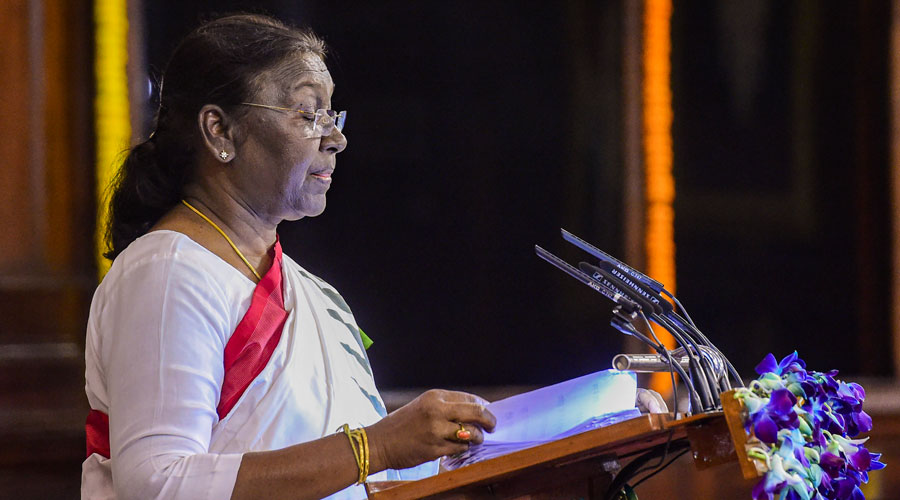Several organisations of the Dimasa community of Assam on Thursday urged President Droupadi Murmu to “stop” the screening of the National Award-winning Dimasa movie Semkhor for portraying their customs, traditions and livelihood “in a very wrong way” before the world.
The film, directed by Aimee Baruah who is also the main protagonist, bagged the best feature film in Dimasa language award at the 68th National Film Awards this year, and also a special jury mention. Last year, Semkhor was among the 24 feature films selected for the Indian Panorama section of the 52nd edition of the government-sponsored International Film Festival of India (IFFI) held in Goa. Guwahati-based Aimee is the wife of Assam BJP leader and cabinet minister Pijush Hazarika.
The three-page memorandum, submitted to the President through the Dima Hasao district administration, alleged that Semkhor, which had a theatrical release on September 23, “misrepresented” and “defamed” the Dimasas and falsely portrayed them as practising customs such as female infanticide and being insular.
Under the banner of the Dimasa Civil Societies, the organisations that signed the memorandum include the Jadikhe Naisho Hoshom, the apex body of the Dimasa community, the All Dimasa Students’ Union, Dimasa Students’ Union (Central Committee), Dimasa Students Community, Guwahati, and the United Dimasa Youths.
The organisations urged the President to stop the screening of the film in theatres to avoid further damage to the Dimasa customs, traditions and livelihood and also sought withdrawal of the comments made by Aimee at media conferences, “authenticating” the story “portrayed” in Semkhor.
The organisations also demanded a public apology from Aimee, compensation for the Dimasa society and justice for the family of a baby artiste who died four days after shooting for the film.
The memorandum was submitted after a 2km peaceful rally taken out in district headquarters Haflong in which several hundred people participated, seeking a ban on the movie. Another protest was held by student and political activists at Guwahati Club on Friday.
Semkhor is a remote village about 80km from Haflong and about 315km from Guwahati. It is inhabited by the Semsa people of the Dimasa community. The village has a population of around 1,400.
“The film has represented the Dimasa customs, traditions and livelihood in a very wrong way and this has hurt our sentiments.… The film portrays the Dimasa people as against any kind of modern development... it portrays the practice of female infanticide in Dimasa society, which is completely wrong and false. Such practices are never known to the Dimasa society since time immemorial,” the memorandum stated.
It said the movie had been screened at several film festivals and “now the world knows us and our customs, traditions and livelihood through the lens of Aimee Baruah’s Semkhor — and this is completely wrong”.
Uttam Langthasa, president of the All Dimasa Students’ Union, Dima Hasao district, said people were especially hurt because of the “wrong depiction” of a girl child being buried alive after the death of her mother during childbirth.
“Such a practice never existed (among the Dimasas). She has also claimed at media conferences that Semsas damage roads to stop outsiders from entering their area and are afraid of getting photographed. Semsas were warriors, always ready to defend the Dimasa kingdom. The movie shows our pujaris (priests) practising black magic, which is also false,” Langthasa said.
In a Facebook post, Aimee said: “Although the plotline of my film Semkhor was created on the basis of information that we collected from newspapers, books, magazines
and a few individuals, fact remains that the story is completely fictional.”











